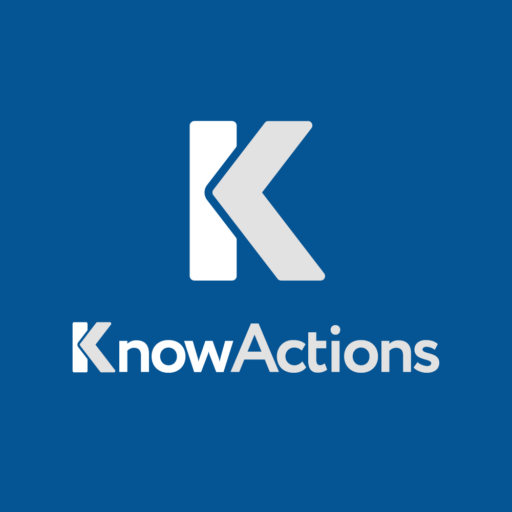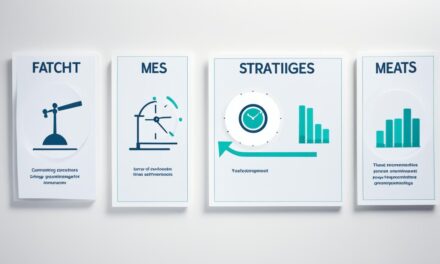A staggering 47% of employees find meetings generally unproductive1. This statistic underscores a pervasive issue in today’s workplaces. With the U.S. hosting an estimated 56 million meetings daily, the burden of meeting overload is evident1.
Unproductive meetings not only squander time but also sow confusion and frustration among team members. CEOs, middle managers, and first-time managers often grapple with running effective staff meetings. This perception that meetings are a time drain is widespread2. We will delve into strategies for cutting down on unnecessary meetings and enhancing meeting productivity.
Strategies for managing time effectively are key to solving the meeting dilemma. For example, designating a no-meeting day, like Thursdays, can greatly enhance productivity1. Another strategy involves swapping lengthy conference room meetings for brief 15-minute stand-up sessions. These can keep teams sharp and efficient1.
By pinpointing and streamlining unnecessary meetings, organizations can reclaim valuable work hours. This approach fosters a more productive environment. We will explore practical tips and strategies to refine your meeting culture and unlock your team’s full potential.
Key Takeaways
- Nearly half of employees find meetings unproductive
- The U.S. hosts an estimated 56 million meetings daily
- Implementing no-meeting days can boost productivity
- Short stand-up meetings can replace longer, inefficient gatherings
- Effective meetings require clear agendas and focused discussions
- Time management strategies are crucial for meeting optimization
- Improving meeting productivity can significantly impact overall efficiency
The Impact of Unnecessary Meetings on Workplace Efficiency
Unnecessary meetings severely disrupt workplace efficiency. Today, executives spend nearly 23 hours each week in meetings, a significant jump from less than 10 hours in the 1960s3. This rise points to a growing issue in modern workplaces, impacting meeting productivity and overall efficiency.
Key Statistics on Time Wasted in Meetings
The average employee now spends about 31 hours monthly in unproductive meetings4. This figure highlights the urgent need for a reevaluation of meeting culture within organizations. Over the past 50 years, meetings have grown longer and more frequent, signaling a worrying trend in productivity3.
Financial Cost of Unproductive Meetings
In 2019, ineffective meetings cost U.S. businesses a staggering $399 billion4. This sum represents the financial toll of lost time, delayed projects, and diminished work quality. Organizations face significant risks to both time and financial resources due to unproductive or overly frequent meetings.
| Impact Area | Cost |
|---|---|
| Time Wasted | 31 hours/month per employee |
| Financial Loss (U.S. businesses, 2019) | $399 billion |
| Executive Time in Meetings | 23 hours/week |
Effect on Employee Productivity and Morale
Excessive meetings negatively affect employee productivity and morale. Meeting overload can lead to decreased productivity, delayed projects, and potential employee turnover4. High meeting frequencies often result in reduced job satisfaction, burnout, and disengagement, further undermining workplace efficiency.
To address these challenges, organizations should establish clear meeting policies, encourage asynchronous communication, and conduct regular meeting audits. These measures can help diminish unnecessary meetings and boost overall workplace efficiency and employee productivity4.
Understanding the Purpose of Meetings in Modern Business
Meetings are essential in today’s business world, acting as key platforms for Effective Collaboration and Communication Efficiency. In the UK, employees spend over a third of their time in meetings, underscoring their importance in daily operations5. Yet, not every meeting is beneficial, with 31% being deemed unnecessary5.
Meetings serve a multitude of purposes, from making decisions to encouraging creativity and coordinating efforts. One-on-One meetings are crucial for managerial communication, while All-Hands meetings enhance company-wide alignment and morale6. Team Huddles, held daily or weekly, ensure team synchronization and quick updates6.
Despite their value, meetings can hinder productivity if not managed well. Studies indicate that 70% of meetings prevent employees from engaging in productive work7. This highlights the need for leaders to view time as a finite resource, akin to financial capital.
“Meetings are indispensable when you don’t want to do anything.” – John Kenneth Galbraith
To enhance meeting effectiveness, consider the following types and their purposes:
| Meeting Type | Purpose | Frequency |
|---|---|---|
| Strategy Sessions | Long-term planning and goal setting | Monthly or Quarterly |
| Brainstorming Meetings | Problem-solving and innovative thinking | As needed |
| Client Meetings | Maintaining business relationships | Varies |
| Board Meetings | Critical strategic decisions and policies | Quarterly or Annually |
During the pandemic, there was a 20% decrease in meeting length, yet workers attended more meetings, by 13.5%7. This shift highlights the need for balancing meeting schedules to sustain productivity and employee well-being.
By discerning the purpose of each meeting type and assessing their necessity, businesses can cultivate a culture of Effective Collaboration and Communication Efficiency. This leads to more purposeful work and enhanced outcomes.
Identifying Red Flags: Signs of an Unnecessary Meeting
Spotting unnecessary meetings is key to keeping the workplace efficient and happy. By following Meeting Agenda Best Practices and Prioritizing Objectives, companies can cut down on time spent in unproductive meetings.
Lack of Clear Agenda or Objectives
One clear sign of a meeting that’s not needed is when there’s no clear agenda. Without clear goals, meetings often go off-track, wasting precious time. The fact that employees waste 31 hours a month in such meetings shows how vital it is to set clear goals8.
Excessive Number of Attendees
Meetings with too many people can slow down decision-making and lower engagement. A 30-minute meeting for 12 people takes away 120 hours of focus from the team each month8. To fix this, consider using a framework like RACI to make decisions clearer and reduce meeting overload.
Recurring Meetings That Have Lost Their Relevance
It’s crucial to regularly check if meetings are still needed. Meetings that stick to old workflows or are just routine add to the problem of too many unnecessary meetings. Studies show that for focus, employees should be in no more than 16 thirty-minute meetings a week9.
| Red Flag | Impact | Solution |
|---|---|---|
| Lack of Clear Agenda | 31 hours wasted per month | Implement Meeting Agenda Best Practices |
| Excessive Attendees | 120 hours of focus time lost | Use RACI framework |
| Irrelevant Recurring Meetings | Decreased productivity | Regular meeting evaluations |
By tackling these issues and focusing on Prioritizing Objectives, companies can foster a more productive meeting culture. This approach not only saves time but also boosts employee engagement and overall efficiency.
Strategies for Reducing Unnecessary Meetings
Reducing unnecessary meetings is key to effective Time Management Strategies. Companies spend about 15% of their time in meetings, with 71% of those meetings yielding little result10. This inefficiency underscores the need for a Meeting Culture Transformation.
Introducing meeting-free days is a potent approach. Slack’s “Focus Fridays” pilot program saw 84% of employees benefiting from uninterrupted work time11. This strategy can boost engagement, collaboration, and autonomy by up to 60%10.
Being selective about who attends meetings is another crucial strategy. With almost one-third of meetings being unnecessary, companies can save millions by eliminating them11. For instance, a 100-person company could save nearly $2.5 million annually by cutting unnecessary meetings11.
Setting clear meeting purposes and communicating asynchronously can also reduce meeting frequency. This is vital as 70% of meetings hinder people from completing tasks, and it can take over 23 minutes for an employee to refocus after a meeting interruption1210.
| Strategy | Benefit |
|---|---|
| Meeting-free days | Increased engagement and autonomy |
| Selective attendance | Significant cost savings |
| Clear meeting purposes | Improved productivity |
| Asynchronous communication | Reduced interruptions |
By adopting these strategies, companies can transform their meeting culture and significantly enhance Time Management Strategies across the organization.
Implementing Effective Meeting Management Techniques
Effective meeting management is key to boosting productivity and enhancing collaboration. By adopting Meeting Agenda Best Practices, organizations can cut down on time spent in unproductive meetings13.
Setting Clear Agendas and Objectives
A well-structured agenda is vital for a successful meeting. It clearly states the purpose, topics, and expected outcomes. Distributing the agenda beforehand lets participants prepare, leading to more productive discussions and efficient time use.
Assigning Roles and Responsibilities
Defining roles ensures Effective Collaboration. Appoint a facilitator to steer the meeting, a timekeeper to monitor the schedule, and a note-taker to capture key points and action items. This setup clarifies everyone’s role in the meeting’s success.
Time Boxing and Strict Adherence to Schedules
Time boxing helps maintain focus and prevents meetings from running long. Allocate specific time slots for each agenda item and adhere to them strictly. This approach values everyone’s time, ensuring discussions remain concise and pertinent.
| Meeting Component | Time Allocation | Purpose |
|---|---|---|
| Introduction | 5 minutes | Set context and expectations |
| Main Discussion | 30-45 minutes | Address key agenda items |
| Action Items | 10 minutes | Summarize decisions and next steps |
By applying these strategies, organizations can enhance meeting efficiency. Research indicates that 61% of executives find at least half of their decision-making time in meetings ineffective, underscoring the importance of better meeting management14. With strategic planning and execution, meetings can become instrumental in driving progress and achieving organizational goals.
Leveraging Technology to Streamline Communication
In today’s digital era, technology is essential for improving Communication Efficiency and optimizing Virtual Meetings. By adopting cutting-edge tools, companies can cut down on unnecessary meetings and increase productivity.
Platforms like Asana, Trello, and Teamwork enhance coordination for complex projects15. They centralize task management, simplifying the process of tracking progress without needing constant updates. Tools such as Time Doctor and Toggl provide detailed reports on time spent by employees, projects, and activities. This promotes accountability and efficiency15.

Video conferencing tools can increase team productivity by 30%, facilitating effective communication in hybrid workplaces1615. This technology enables engaging virtual meetings, reducing the need for face-to-face meetings. Cloud-based services like Google Drive and Microsoft OneDrive also centralize documents for real-time collaboration, cutting down on the need for update meetings15.
AI-driven automation is transforming workplace efficiency. In 2022, 35% of companies integrated AI into their core operations, with nearly 50% seeing an increase in IT automation in various industries and workflows16. IBM noted a 25% decrease in project completion time after adding AI to their workflow management16. These AI advancements are vital for boosting productivity with smart apps and.
By utilizing these technological solutions, businesses can streamline communication, optimize virtual meetings, and foster a more efficient and productive work environment.
The Role of Leadership in Fostering a Productive Meeting Culture
Leaders are pivotal in transforming Meeting Culture. They dictate how meetings are conducted and valued within an organization. By adopting effective Workplace Productivity Hacks, leaders can significantly enhance meeting efficiency.
Leading by Example
Leaders must critically assess meeting invitations, viewing their time as a limited resource. By setting clear meeting objectives, they can cut time spent on irrelevant discussions by up to 50%17. This approach highlights the significance of purposeful meetings to the team.
Encouraging Feedback and Continuous Improvement
Engaging in open dialogue about meeting effectiveness is crucial. Leaders should actively solicit feedback on meeting duration, timing, and content. Enhancing leadership team materials can improve meeting satisfaction by up to 45%17. This feedback loop encourages a culture of continuous improvement in meeting practices.
Empowering Employees to Decline Unnecessary Meetings
Leaders should empower team members to decline meetings deemed non-essential to their roles. This practice respects individual time and productivity. In firms with 500 or more employees, meetings consume 17% of employee time18. By reducing unnecessary attendance, organizations can reclaim valuable work hours.
| Leadership Action | Potential Impact |
|---|---|
| Setting Clear Objectives | Up to 50% time saved |
| Involving Diverse Voices | 40% increase in perspective richness |
| Reviewing Alignment | 30% improvement in team sync |
| Celebrating Successes | 25% boost in team morale |
By balancing time between external stakeholder interactions, internal meetings, and individual work, leaders can foster a more productive meeting culture. This balanced approach ensures meetings fulfill their intended purpose without overwhelming the workday.
Alternative Methods for Information Sharing and Decision Making
Businesses are moving away from traditional meetings to enhance Communication Efficiency. With 36 to 56 million meetings occurring daily in the US, finding better methods for sharing information and making decisions is essential19.
Written updates are a powerful tool for sharing information. They allow team members to absorb information at their own speed, reducing the need for lengthy verbal presentations. This method can significantly reduce the $75 million at risk for every $1 billion spent on projects due to poor communication20.
Stand-up meetings are another effective way to foster Effective Collaboration. These brief, focused meetings can reduce meeting time by a third. They are particularly beneficial for teams of nine or fewer, as larger groups can impede clear communication19.
Video conferencing software is revolutionizing remote teams. It enables non-verbal cues and promotes teamwork, making it a crucial tool for contemporary businesses19. Additionally, recorded updates are becoming more popular, allowing team members to share information asynchronously.
“The key to efficient information sharing is finding the right balance between persistence and evolution of ideas.”
To adopt these new methods, teams must agree on a fresh approach, develop templates for common meetings, and establish strategies for handling setbacks. This structured Meeting Operating System can greatly enhance Communication Efficiency and minimize wasted time20.
| Method | Prep Time | Digest Time | Persistence |
|---|---|---|---|
| Written Updates | Medium | Low | High |
| Stand-up Meetings | Low | Low | Low |
| Video Conferencing | Low | Medium | Medium |
| Recorded Updates | High | Medium | High |
Measuring the Success of Meeting Reduction Efforts
Evaluating the impact of reducing meetings is key to boosting productivity and efficiency at work. By tracking important metrics, companies can see how well their strategies work and make informed choices.
Key Performance Indicators for Meeting Efficiency
Assessing meeting efficiency means looking at several factors. For instance, how often people attend meetings shows how valuable they find them and their relevance21. Also, how well meetings are followed up on is a clear sign of their success, with high rates indicating goals were met21.
| Meeting Type | Annual Cost |
|---|---|
| Standard Team Meeting | £24,960 |
| Extended Project Meeting | £83,200 |
| Brief Check-in Meeting | £8,320 |
Tracking Time Saved and Productivity Gains
Companies can see the financial benefits of fewer meetings by looking at their length, how often they happen, and who attends. For example, a regular team meeting costs about £24,960 a year, while a longer project meeting can be as high as £83,20021. Cutting down on unnecessary meetings can greatly improve efficiency and help use resources better.

Employee Satisfaction Surveys
It’s crucial to get feedback from employees to understand how cutting down on meetings affects their morale and engagement. Things like the meeting space, how often they happen, and the leader’s behavior affect how effective meetings are22. Interestingly, the size of the meeting doesn’t really matter, but being on time and clear in communication does help make meetings productive22.
By focusing on these key indicators and checking the results often, companies can keep improving their meeting strategies. This helps create a culture that values productivity and efficiency at work.
Overcoming Challenges in Implementing Meeting Reduction Strategies
Transforming meeting culture is a complex task. Many organizations struggle to reduce unnecessary meetings. A crucial strategy is to cultivate a culture where individual decision-making is prioritized over the tendency to schedule meetings reflexively.
Companies are acknowledging the necessity for change. Indeed, 80% of executives are contemplating or have begun altering meeting structures and schedules due to the COVID-19 pandemic23. This shift underscores the increasing recognition of the importance of meeting culture transformation.
One effective tactic is to provide high-quality administrative support. This method enhances time management and productivity. Teams with robust support in scheduling and time allocation tend to exhibit higher productivity levels.
“Regular contact between product teams and support or success teams can improve features development.”
Experimentation is vital for successful meeting reduction. It’s essential to be open to adjusting strategies based on feedback and outcomes. Notably, 86% of employees and executives pinpoint a lack of collaboration or ineffective communication as primary causes of workplace failures24. Regular team meetings can preemptively address potential difficulties.
| Challenge | Solution |
|---|---|
| Resistance to change | Educate on benefits of meeting reduction |
| Fear of missing out | Implement effective communication channels |
| Lack of accountability | Set clear goals and measure outcomes |
By tackling these challenges directly, organizations can effectively transform their meeting culture and enhance workplace productivity. The key is to strike a balance between face-to-face interactions and asynchronous communication tools, ensuring each meeting has a defined purpose.
Best Practices for Virtual and Hybrid Meetings
The transition to virtual and hybrid work has introduced both hurdles and opportunities for meeting optimization. Companies have embraced this change, benefiting from a broader talent pool and reduced costs25. To enhance Communication Efficiency, businesses must evolve their virtual meeting strategies.
Optimizing video conferencing tools
Optimizing virtual meetings begins with the right tools. Post-pandemic, many firms have turned to sophisticated scheduling and AI-powered meeting tools26. These technologies automate tasks like recording and transcribing, significantly enhancing efficiency26. It’s essential to tailor meeting time to specific objectives, such as idea generation or decision-making25.
Ensuring equal participation for remote attendees
Hybrid meetings come with their own set of challenges, often surpassing those of fully virtual ones25. To ensure inclusivity, firms should consider implementing meeting-free days and brief follow-ups or one-on-ones instead of status updates26. Additionally, incorporating 5-10 minute breaks between meetings aids both in-person and remote attendees25.
Addressing common pitfalls of virtual meetings
To sidestep common issues, organizations must prioritize technology proficiency and prepare for effective engagement strategies25. Not every topic warrants a meeting; decisions should be made based on necessity25. By adopting these strategies, companies can foster a more inclusive and collaborative hybrid work environment, overcoming geographical barriers25.





